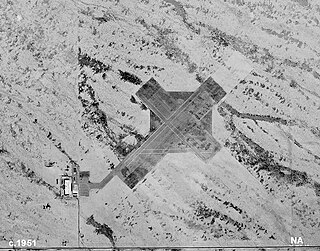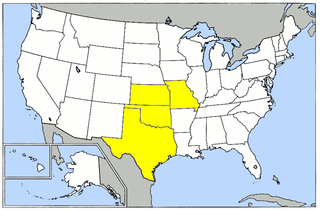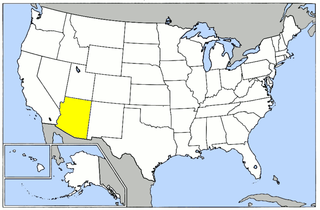- Albany Army Airfield, Albany Georgia
- 52d Flying Training Detachment [4]
- Operated by: Darr Aero-Tech Primary Flying School [5]
- Opened: October 1940, Closed: November 1944 (PT-17) [6]
- Controlled four auxiliary airfields
- Augustine Field, Madison, Mississippi
- 62d Flying Training Detachment [4]
- Operated by: Mississippi Institute of Aeronautics [5]
- Opened: 1941, Closed: June 1944 (PT-17, PT-19) [7]
- Was a sub-base to Jackson Army Airbase, CFS controlled three auxiliary airfields
- Avon Park Municipal Airport, Avon Park, Florida
- 61st Flying Training Detachment [4]
- Operated by: Lodwick Aviation Military Academy [5]
- Opened: October 1941, Closed: June 1944 (PT-17) [8]
- Controlled four auxiliary airfields
- Carlstrom Field, Arcadia, Florida
- 53d Flying Training Detachment [4]
- 2148th Army Air Forces Base Unit (Contract Pilot School, Primary), April 1944
- Operated by: Embry-Riddle Company [5]
- Opened: June 1941, Closed: June 1945 (PT-17) [9]
- Controlled four auxiliary airfields (Joint with Dorr Field)
- Chester Field, McBride, Missouri
- 74th Flying Training Detachment [4]
- Operated by: Anderson Air Activities [5]
- Opened: June 1943, Closed: March 1944 (PT-17) [10]
- Decatur Airport, Decatur, Alabama
- 65th Flying Training Detachment [4]
- Operated by: Southern Regional Airways, Inc [5]
- Opened: October 1941, Closed: September 1945 (PT-17, PT-19) [11]
- Controlled five auxiliary airfields
- Douglas Airport, Douglas, Georgia
- 63d Flying Training Detachment [4]
- Operated by: South Georgia College [5]
- Opened: May 1941, Closed: December 1944 (PT-17) [12]
- Controlled four auxiliary airfields
- Dorr Field, Arcadia, Florida
- 54th Flying Training Detachment [4]
- Operated by: Embry-Riddle Company [5]
- Opened: October 1941, Closed: October 1944 (PT-17, PT-19) [13]
- Controlled four auxiliary airfields (Joint with Carlstrom Field)
- Fletcher Field, Clarksdale, Mississippi
- 69th Flying Training Detachment [4]
- Operated by: Clarksdale School of Aviation [5]
- Opened: August 1942, Closed: August 1944 (PT-17, PT-19, PT-23) [14]
- Controlled two auxiliary airfields
- Harrell Field, Camden, Arkansas
- 59th Flying Training Detachment [4]
- Operated by: Wiggings-Marden Aero Corp [5]
- Opened: August 1942, Closed: April 1944 (PT-17, PT-19) [11]
- Controlled two auxiliary airfields
- Harris Army Airfield, Cape Giardeau, Missouri
- 73d Flying Training Detachment [4]
- Operated by: Cape Institute of Aeronautics, Inc [5]
- Opened: January 1943, Closed: March 1944 (PT-18, PT-19, PT-23) [15]
- Controlled three auxiliary airfields
- Hawthorne School of Aeronautics, Orangeburg, South Carolina
- 58th Flying Training Detachment [4]
- 2162d Army Air Forces Base Unit (Contract Pilot School, Primary), April 1944
- Operated by: Hawthorne School of Aeronautics [5]
- Opened: October 1941, Closed: November 1945 (PT-18, PT-19, PT-23) [16]
- Also conducted Free French Air Force pilot training [17]
- Controlled three auxiliary airfields
| - Lodwick Field, Lakeland, Florida
- 61st Flying Training Detachment [4]
- 2160th Army Air Forces Base Unit (Contract Pilot School, Primary), April 1944
- Operated by: Lodwick School of Aeronautics [5]
- Opened: September 1940, Closed: August 1945 (PT-17) [18]
- Controlled seven auxiliary airfields
- Lafayette Airport, Lafayette, Louisiana
- 70th Flying Training Detachment [4]
- Lafayette School of Aeronautics [5]
- Opened: September 1941, Closed: April 1944 (PT-17, PT-19) [19]
- Controlled four auxiliary airfields
- McKellar Field, Jackson, Tennessee
- 68th Flying Training Detachment [4]
- Operated by: Georgia Air Services, Incorporated [5]
- Opened: July 1942, Closed: October 1944 (PT-17, PT-19, PT-23, PT-27) [20]
- Moton Field, Tuskegee, Alabama
- 66th Flying Training Detachment [4]
- 2564th Army Air Forces Base Unit (Contract Pilot School, Primary) (Colored), April 1944
- Operated by: Tuskegee Institute [5]
- Opened: June 1941, Closed: October 1945 (PT-13, PT-14, PT-17) [21]
- Controlled two auxiliary airfields
- Palmer Field, Bennettsville, South Carolina
- 53d Flying Training Detachment [4]
- Operated by: Georgia Air Service, Incorporated and Southeastern Air Service, Incorporated [5]
- Opened: October 1941, Closed: October 1944 (PT-17) [22]
- Souther Field, Americus, Georgia
- 56th Flying Training Detachment [4]
- Operated by: Graham Aviation Co. [5]
- Opened: February 1941, Closed: October 1944 (PT-17) [23]
- Taylor Field, Ocala, Florida
- 57th Flying Training Detachment [4]
- Operated by: Greenville Aviation School [5]
- Opened: December 1941, Closed: September 1944 (PT-17) [24]
- Thompson-Robbins Field, Helena, Arkansas
- 59th Flying Training Detachment [4]
- Operated by: Helena Aerotech [5]
- Opened: October 1941, Closed: August 1944 (PT-17, PT-19, PT-23) [25]
- Controlled five auxiliary airfields
- Van de Graaff Field, Tuscaloosa, Alabama
- 51st Flying Training Detachment [4]
- Operated by: Alabama Institute of Aeronautics, Inc [5]
- Opened: September 1939, Closed: August 1944 (PT-11, PT-17, PT-19) [26]
- Also conducted Free French Air Force pilot training [17]
- Controlled five auxiliary airfields
- Embry Riddle Aeronautical Institute, Union City, Tennessee
- 67th Flying Training Detachment [4]
- Operated by: Riddle-McKay Company of Tennessee and Riddle Aeronautical Institute [5]
- Opened: August 1943, Closed: April 1944 (PT-17, PT-19, PT-23, PT-27) [27]
- Controlled three auxiliary airfields
- Woodward Field, Camden, South Carolina
- 64th Flying Training Detachment [4]
- Operated by: Southern Aviation School [5]
- Opened: April 1941, Closed: August 1944 (PT-17) [28]
- Controlled two auxiliary airfields
|






















